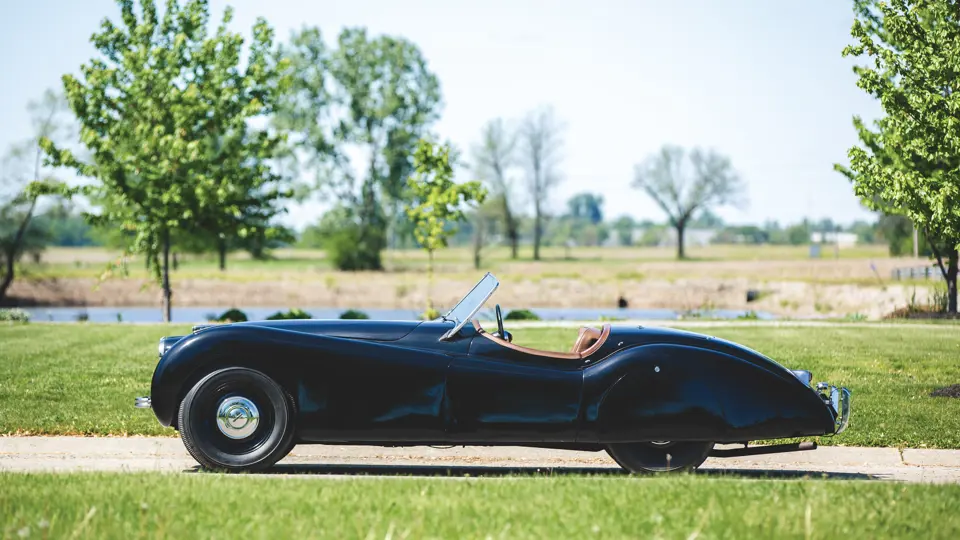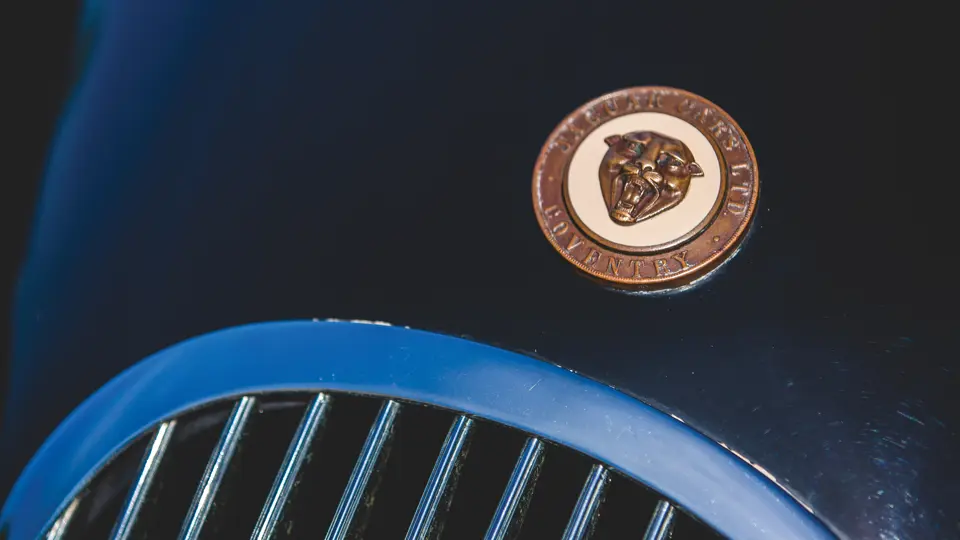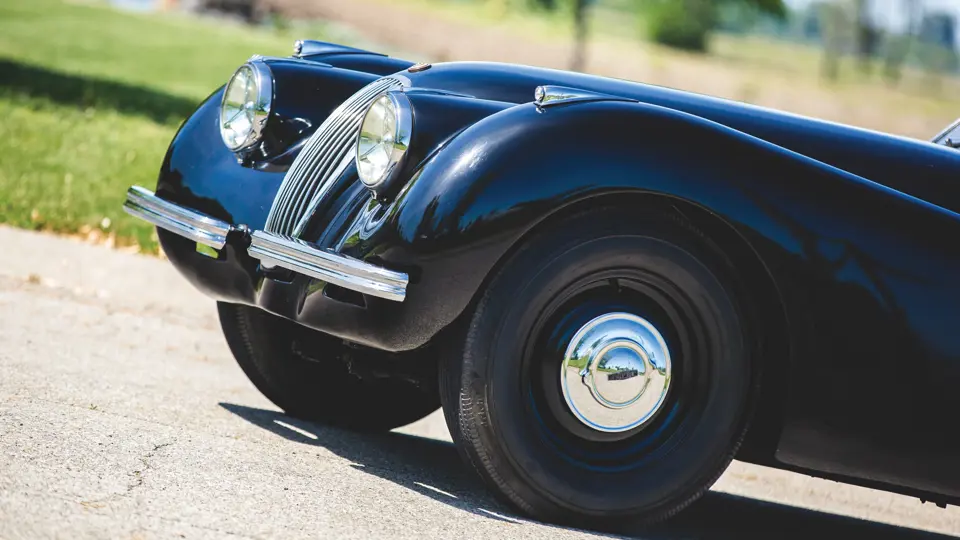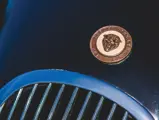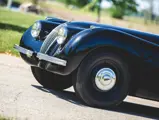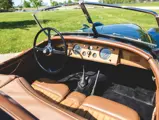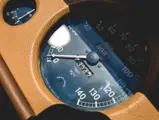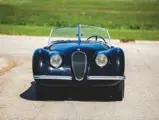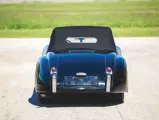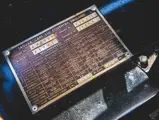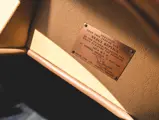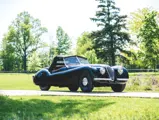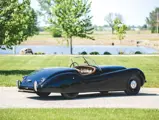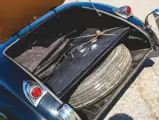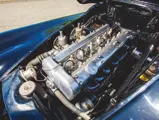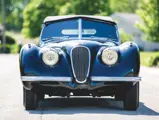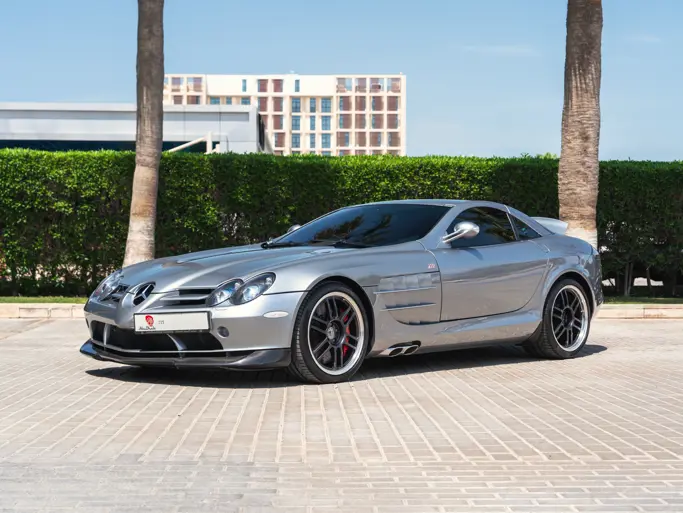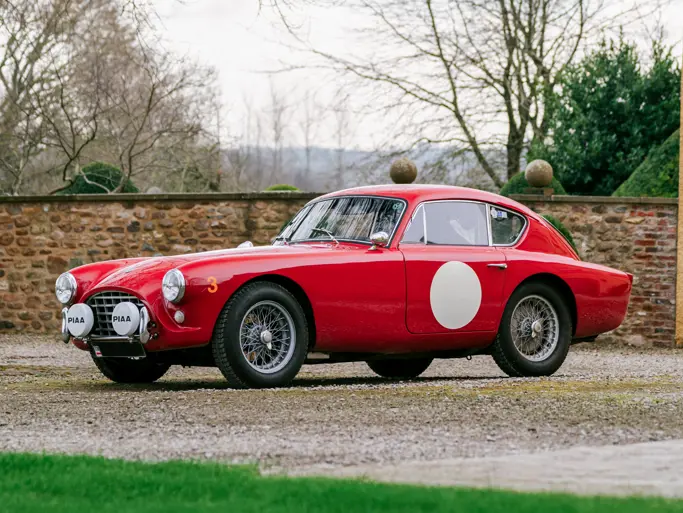
1949 Jaguar XK 120 Alloy Roadster
{{lr.item.text}}
$407,000 USD | Sold
{{bidding.lot.reserveStatusFormatted}}
- One of 148 left-hand-drive Alloy Roadsters
- Older comprehensive restoration, recently refreshed and well maintained
- Matching numbers engine block
- Excellent example for vintage rallies
- The most desirable XK120 variant
160 hp, 3,442 cc DOHC inline six-cylinder engine with two SU H6 carburetors, four-speed manual transmission, independent front suspension, live rear axle with semi-elliptical springs, and four-wheel drum brakes. Wheelbase: 102 in.
Although the Jaguar name did not achieve marque status until after World War II, its legacy began in the 1920s. The Swallow Coachbuilding Company, founded by William Lyons and William Walmsley, began building aluminum sidecars for motorcycles in 1922. What put SS cars on the map was the two-seat SS 100 “Jaguar” model of 1936, with its 2½-liter Standard engine worked over by Harry Weslake and William Heynes. It was hugely successful in competition and sales.
By 1945, “SS” had unsavory connotations, while the Jaguar name had become well regarded as a result of the SS 100. Thus, Jaguar Cars, Ltd. was adopted as the company name, and all further automobiles were badged as such. Through 1948, pre-war designs were perpetuated, with saloons and drophead coupes being in 1½-, 2 ½-, and 3½-liter form, with traditional British lines.
The milestone moment in Jaguar history, however, was the introduction of the XK120 Sports Roadster at the London Motor Show at Earls Court in September 1948. The XK120 was the talk of the show. Low and lithe, with a curvaceous envelope body, it had a newly designed dual overhead-cam six of 3,442 cubic centimeters. The model took its name from a May 1949 speed run by a production roadster on Belgium’s Jabbeke Highway, where it was clocked at over 120 mph and proclaimed the “fastest production car in the world.”
The Times of London reported that “with the hood [top] up, the car averaged 126.4 mph for a mile in two runs in opposite directions. The fastest mean speed of 132.5 mph was reached with a racing windscreen in place; the best run being made at 133.2 mph. The car also covered a kilometre from a standing start at a speed of 74.1 mph and a mile at 86.4 mph.” The first 242 cars were bodied in aluminum, after which demand justified retooling for steel in May 1950. Called the “alloy cars,” the aluminum-bodied XK120s occupy a special place in the Jaguar community.
This car, chassis number 670060, is one of only one hundred eighty-four examples with left-hand drive in the coveted alloy fraternity. It was completed on December 19, 1949, and dispatched on January 11, 1950, to Charles Hornburg, the Los Angeles importer. The Jaguar was then delivered to a Mr. J.L. Albert through Clayrich Motors in St. Louis. As delivered, it was finished in black with a Biscuit and Pigskin interior and a black roadster top.
The car’s older rotisserie restoration is documented in an accompanying pictorial history. It has recently been given a cosmetic touch-up by Muncie Imports and Restoration, Jaguar specialists in Muncie, Indiana. Its Heritage Certificate from the Jaguar Daimler Heritage Trust confirms that the restoration colors are as original. The present owner purchased the car in Pennsylvania in 2001; its former owners have included the well-known enthusiasts Terry Larson and Mark Smith.
Performance aside, the car is, in short, absolutely beautiful. The distinctive pressed steel wheels and rear-wheel spats add to its sleek design and its air of simplicity, giving substance to the axiom that the initial version of any design is always the best.




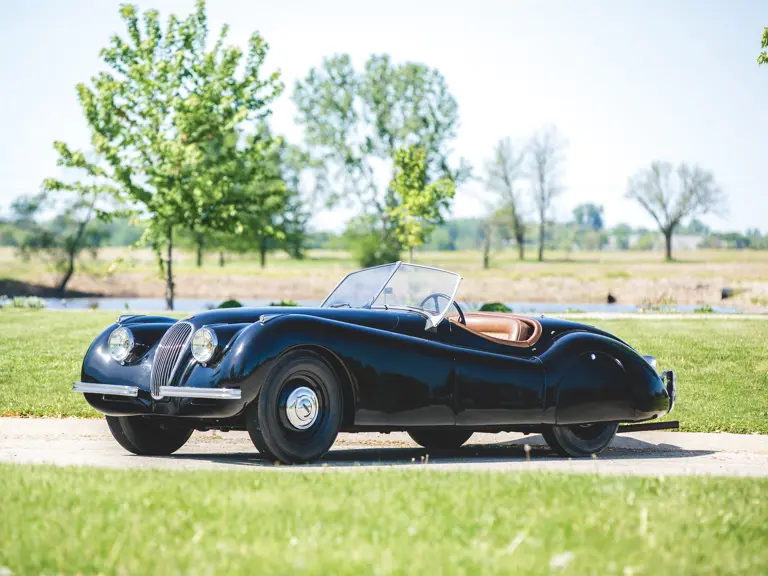
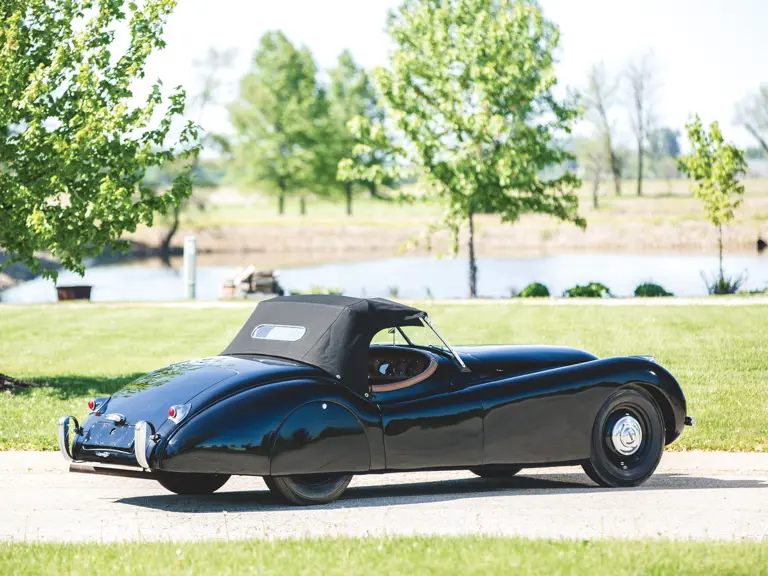
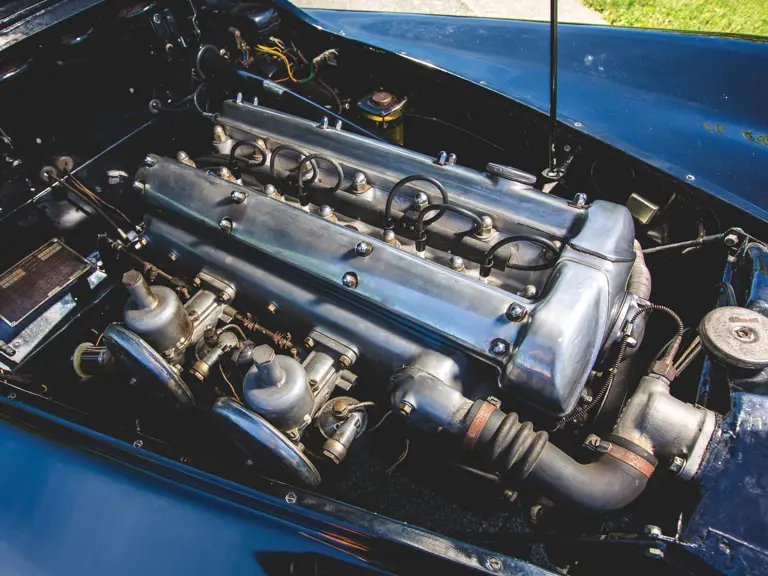
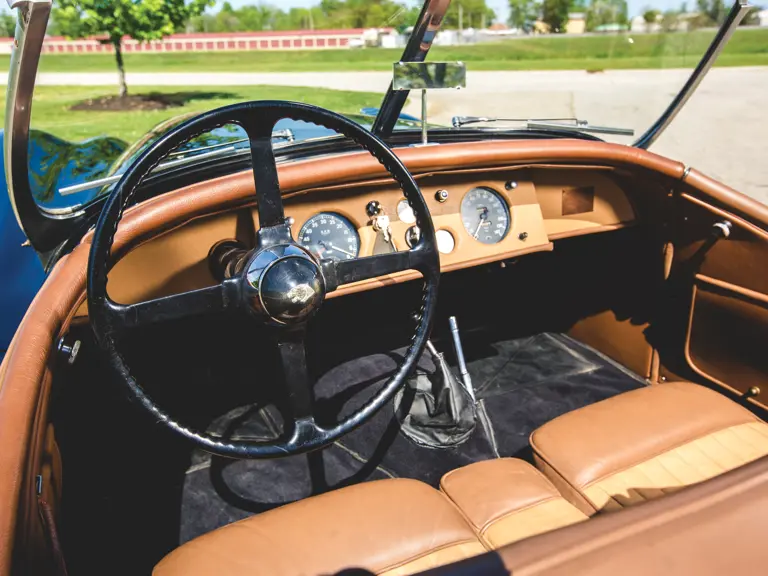
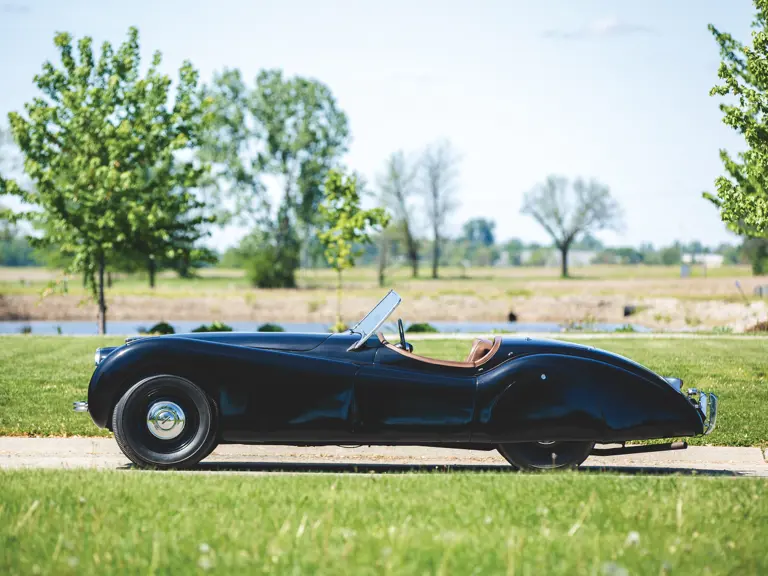
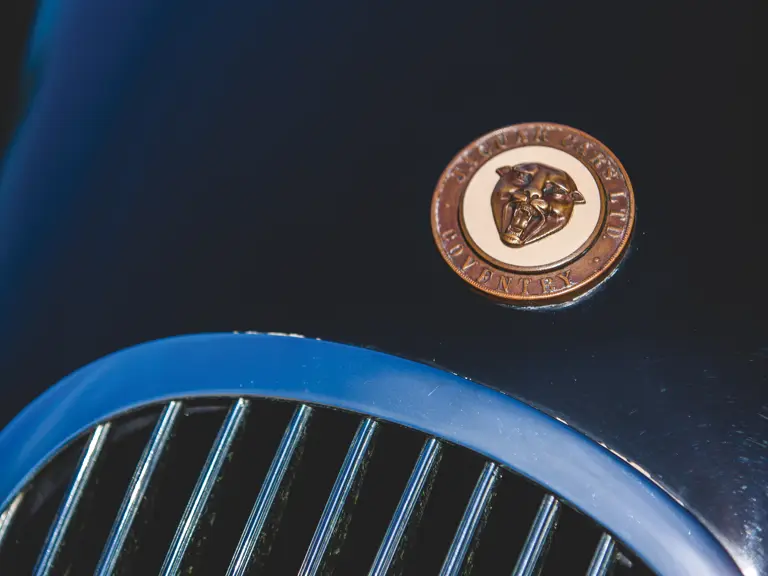
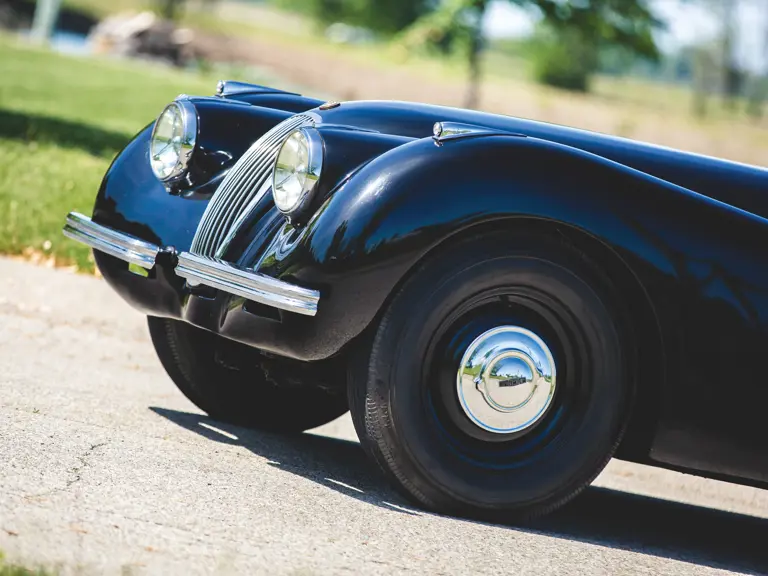

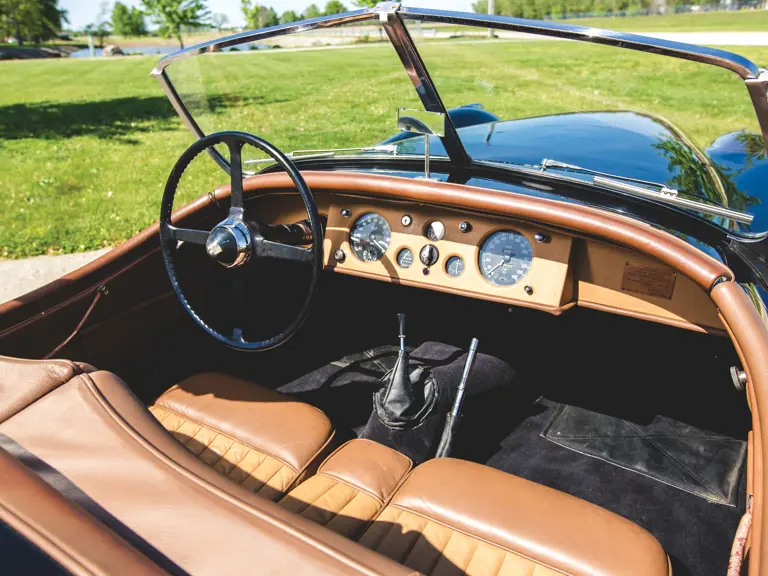
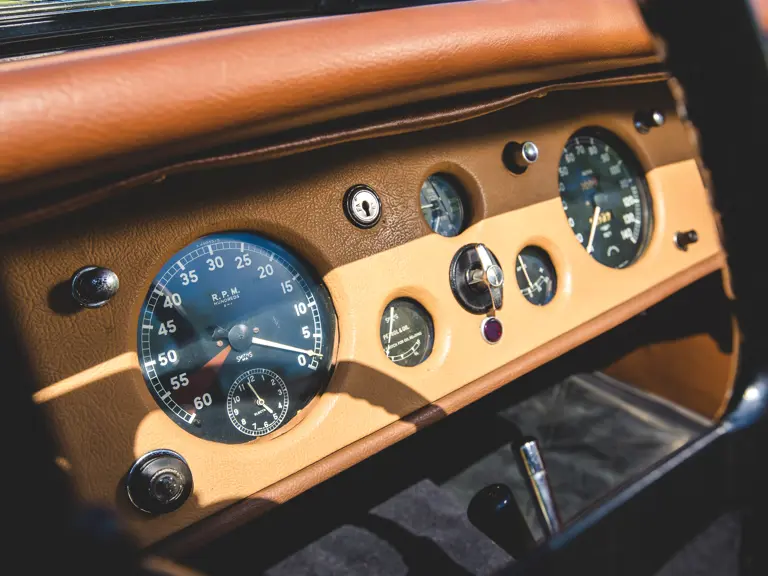
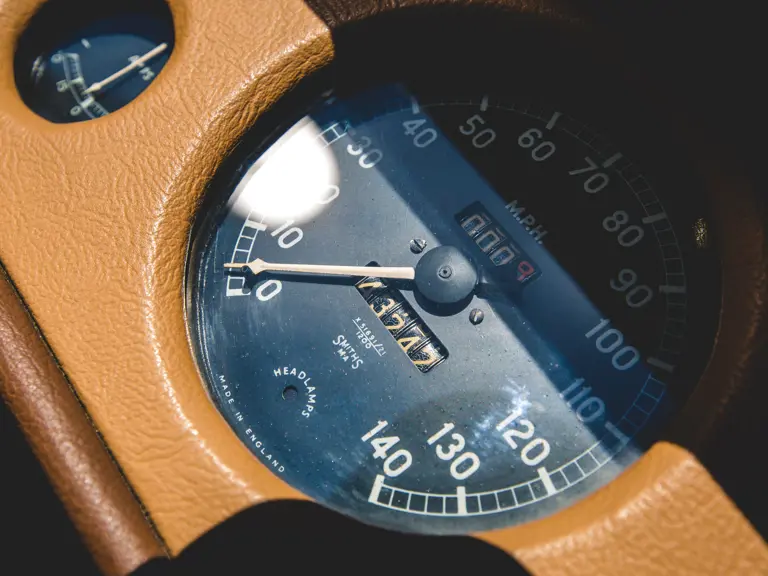
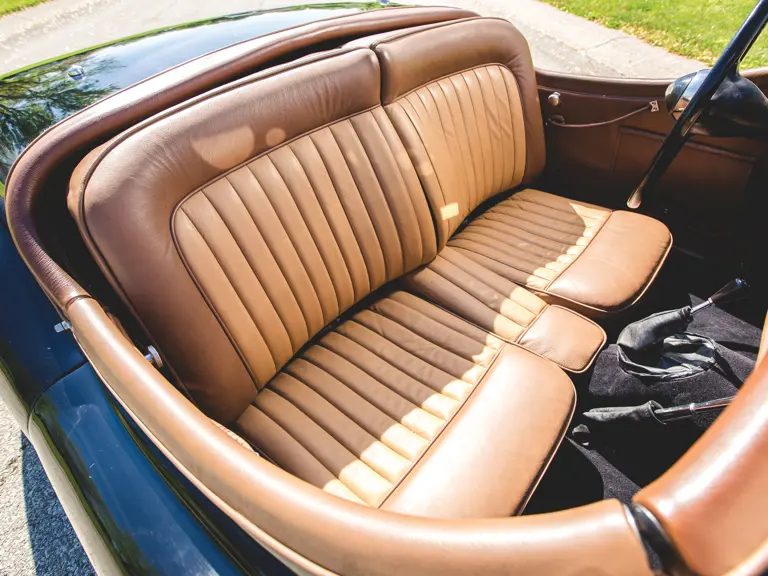
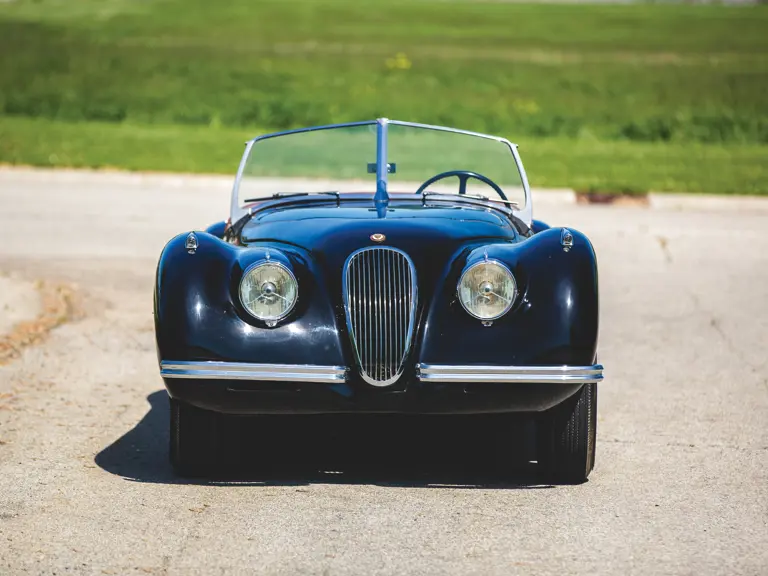
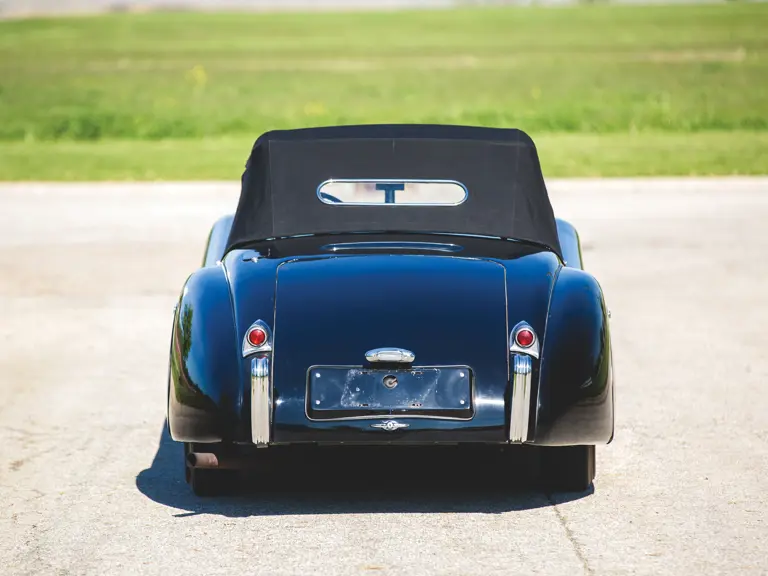
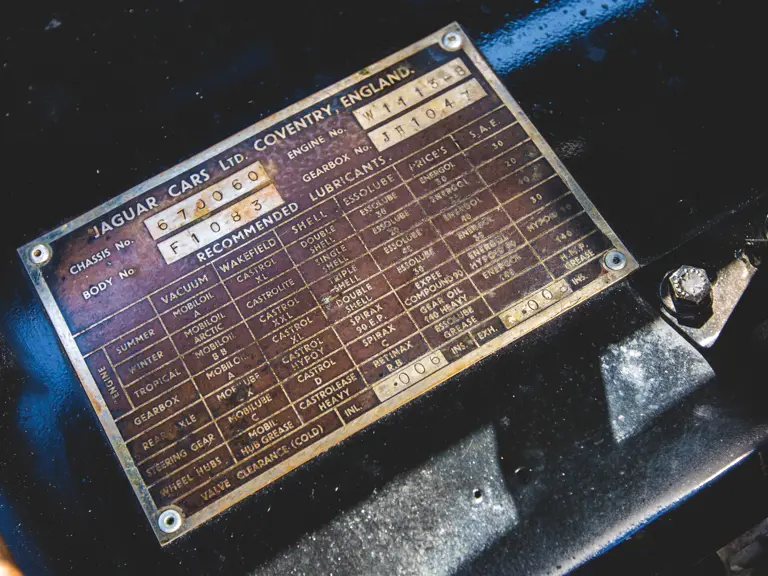
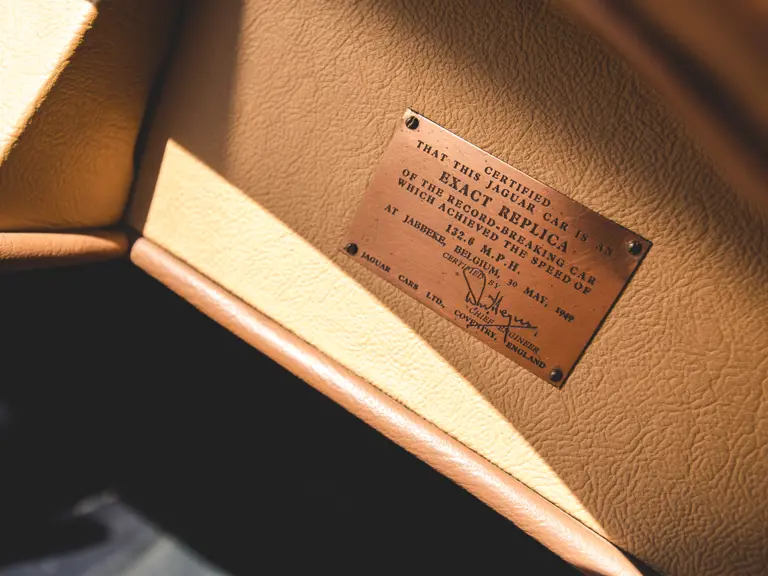
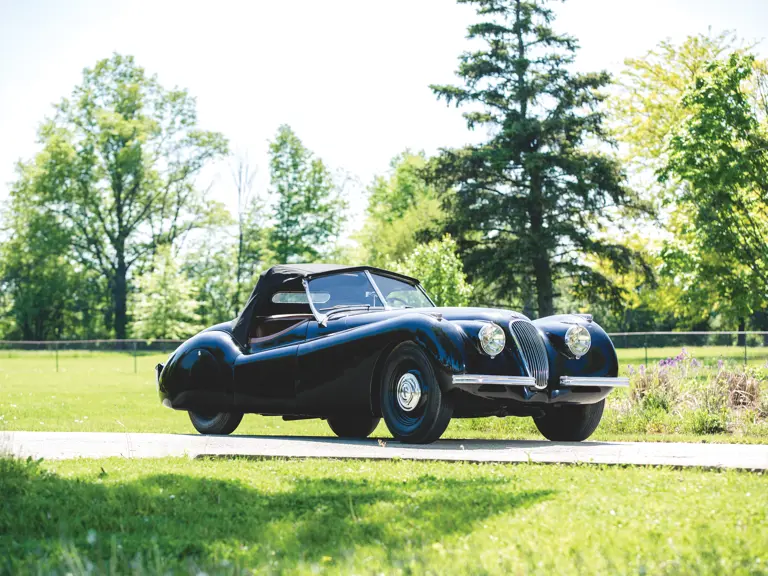
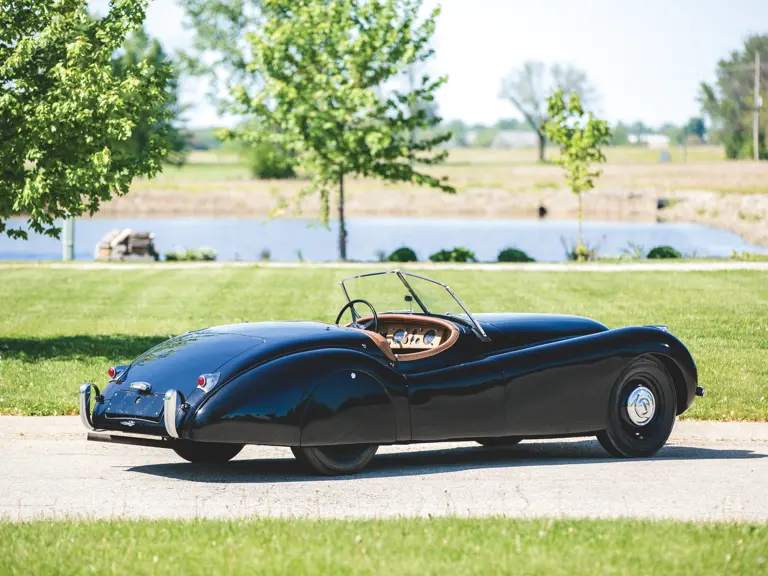
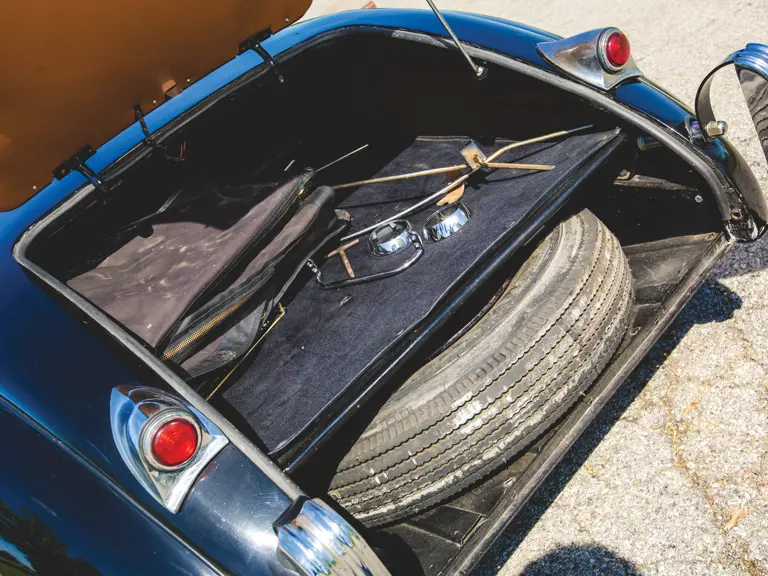

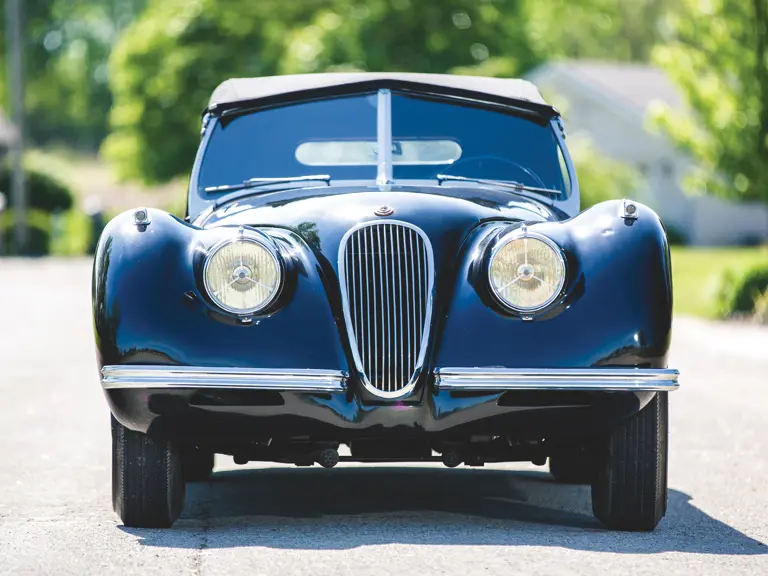
 | Monterey, California
| Monterey, California
